Dear Friends,
This week Annie will facilitate.
All of us have felt fear, sadness, or anger, from time to time, and right now it seems that many of us are feeling these things even more. These kinds of strong feelings arise without warning and sometimes we don't know what to do with them.
Strong emotions have a lot to teach us about what's most important to us and what our past conditioning has been. The downside of fear, anger and sadness are that if we don't know how to take care of them, they can hijack us. This hijacking can leave us stuck in the painful emotions or cause us to act out in ways that don't serve us or those around us, which then pulls us right back into our painful emotions.
Thich Nhat Hanh (Thay) often talks about how to take care of and transform our strong emotions that arise and often hijack us. In an interview with Oprah he described it this way:
"So you recognize that fear. You embrace it tenderly and look deeply into it. And as you embrace your pain, you get relief and you find out how to handle that emotion.
And if you know how to handle the fear, then you have enough insight in order to solve the problem. The problem is to not allow that anxiety to take over. When these feelings arise, you have to practice in order to use the energy of mindfulness to recognize them, embrace them, look deeply into them.
It's like a mother when the baby is crying. Your anxiety is your baby. You have to take care of it. You have to go back to yourself, recognize the suffering in you, embrace the suffering, and you get relief. And if you continue with your practice of mindfulness, you understand the roots, the nature of the suffering, and you know the way to transform it."
When I first heard him talk about embracing our emotions like a crying baby, I thought it made sense, but I wasn't sure exactly how to do it. What helped me, and what I practice now, is a combination of Thay's teaching and the practice called Inner Relationship Focusing. Like sitting meditation, it's a practice we can turn to again and again whenever we feel triggered and caught in our reactivity.
Monday we will go through some simple steps that I use to notice, care for, validate and transform fear, anger and sadness. The practice below often, but not always, helps me move out of stuckness and reactivity, and act in clear and concrete ways that reflect my deepest intentions to benefit to all beings and not add more suffering to the mix.
Here are the basic steps:
(1) Pay attention to the crying baby of suffering -- the fear, anger or sadness triggered by whatever is happening. Turn toward the suffering especially as it manifests in your body.
(2) Embrace the emotion with compassion toward the part of you that is feeling scared, angry or sad. Identify with the larger You who can hold the smaller part of you that is in pain -- just as when a baby cries, the first think you do is pick it up and cradle it. Right away you will feel a little better.
(3) Find out what it needs. As you hold the reactive emotion, you can see what it is really wanting or not wanting for you. There's a reason it's crying. It may be as simple as it wanting you to know how it feels. Or it may be worried that if you don't act you will be hurt, or perhaps it doesn't feel cared for. A baby can't tell us directly what is wrong, and in the same way parts will need us to pay gentle and close attention if we are to understand why this part feels so reactive.
(4) Empathize. Once you have embraced the part and understood why it is so upset, you can empathize with it. Given the limited information and understanding that this reactive part has, it's no wonder that it is scared, angry or sad. Just as you would do with a small child, you can let your part know that you understand why it feels the way it does. At the same time, you stay present in mindfulness which allows you to see that more is possible.
(5) Act from presence. If you are settled in your mindful presence -- the parent holding the baby -- and you have taken the time to understand why this part is scared, angry or sad, your decisions will be made with confidence and clarity, instead of being controlled by the fear, anger or sadness. This practice doesn't take away the feelings, it just means you don't identify with the feelings as who you are. Instead, you are the one who can hold the scared, angry or sad parts and still live your life from your deepest intentions.
After walking meditation, Annie will offer a guided meditation to help us recognize and embrace our strong emotions, especially our fear, anger and sadness. After that, we will have time to share about the strong emotions we are dealing with right now, and how we can work with them to guide us into skillful action rather than hijack us into unskillful action or despair.
I look forward to seeing you all there. It's the first Monday of the month, so we will have a 30 minute newcomer's session from 6:15-6:45 pm. If it's your first time in the group or you want a refresher, please join us!
With love,
Annie.

